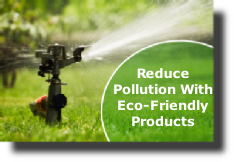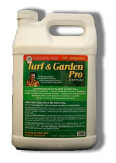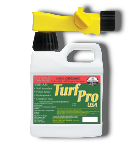





























1-
Springtime is coming, and down here in Florida we are granted the opportunity to start now and
begin the build-
and foremost of all is the addition of organic matter. Healthy soil for growing plants should be
approximately 6 – 10% organic material, though often it will measure a bare fraction of 1%.
There are certain steps we can take throughout the year to progress towards the goal of having
healthy soil, and the singular act of adding organic matter where you are deficient will go a long
way towards making us all better growers, with much healthier and happier plants.
There are many soil conditioning, soil amendment, and soil improvement options out there in the
marketplace. For simplicity sake and ease of use, I prefer complete and all inclusive solutions
whenever possible, though, it takes much research and shopping around to find good ones. I
will review some of the individual components and the benefits you should expect with regard to
your soil and plants. As you compare products, pay attention to see which include the best
combinations of the following:
Humic, Fulvic, and Ulmic Acids
These acids improve soil structure, drainage, root growth and crop quality. They also stimulate
seed germination, neutralize harmful chemicals, increase cellular permeability and help to nurture
beneficial soil microbe populations.
Many of the humate substances available today originated from prehistoric plant tissue that has
been subjected to millions of years of pressure, heat, and microbial activity. This creates an
extremely rich, compost-
and micronutrients that are missing from today’s soil and are not found in more traditional plant
fertilizers. The very best come from ancient natural humus deposits with improved bio-
due to the fact they are composed of both Plant and Animal tissues. These are user-
both dry and liquid forms. The dry typically comes as either a granular, which is highly suitable
for a lawn spreader, or a fine powder which is better for re-
kits. The best of these raw materials are water soluble, and the liquids are formulated by simple
cold-
are so important (more on those later). A secondarily acceptable option that will result in
impressive “one time shot” are those extracted from Leonardite shale or lignite coal, though the
extraction process tends to eliminate the beneficial microbes, and so these are less complete
solutions. These are much easier to find, often more expensive, and less effective in all but the
short term. Overall, humates are an important element in any natural growing environment, and
have been established and accepted for centuries as necessary for healthy plants.
Microbes
Your soil may have adequate nutrients as measured by the chemistry set, but nutrients may well
be tied up in forms that are not available for use by the plants. By repopulating and stimulating
microbial activity, good quality soil amendments speed up the decay process and the
subsequent return of nutrients in usable forms to the soil. Additionally, healthy microbial activity
loosens compacted soil, encourages deeper root zones which improves drought
tolerance/reduces water requirements, and increases natural aeration.
Two of the microbe species that are especially beneficial are the Bacillus and the
Pseudomonas. The Bacillus species of microbes are primarily decomposers, and as such, they
are instrumental in the breakdown of organic matter (think grass clippings and thatch) into
nutrients. Proper soil balance improves tilth and fertility by stimulating the growth and
metabolism of beneficial Bacillus which is critical to the soil system’s healthy processing of
organic matter. The Pseudomonas is the main microbe for chelating nutrients, which is the
process whereby the nutrients are converted into a form that is readily useable by plants.
Chelated trace elements and minerals are essential for plant growth. These are vital in the
chemistry of plant life, because plants cannot transpire, grow or reproduce when they lack
sufficient amounts of specific minerals and trace elements. A good quality product will chelate
directly by converting the available minerals in your soil, as well as indirectly by increasing the
functionality of the native microbes in the plant system. The chelation stimulated by application
of these products increases the amount of natural nitrogen and phosphorus available to the
plants, and improves the overall efficiency of nutrient uptake. Unfortunately, many growers do
not understand that the presence or addition of nutrients is not enough, these nutrients be in a
form that plants can use. All soils should benefit from healthy amendments or conditioners that
add and/or stimulate the growth and metabolism of beneficial microorganisms. Look for the 100%
All Natural and Organic formulations, and be sure that there are healthy populations of these
beneficial microbes in any product you choose.
Carbon
Carbon plays an important role as a food source for the microbes. Remember, microbes are
living organisms, and all living organisms need food. A complete solution liquid soil amendment,
in addition to providing the microbes themselves, must also function as a life sustaining delivery
vehicle for these microbes. The beneficial soil microbes are mixed with water and while they are
living in that bottle, it is of paramount importance that they have a sustaining food source until
they are incorporated into the soil. There are additional benefits from using carbon as a food
source. Carbon holds 6 times its weight in water, which will improve pore space in the soil and
help reduce hydrophobic areas. Some studies have also shown that maintaining a carbon to
nitrogen ratio of 30 to 1 will reduce nematode pressure. The best products available will have
carbon contents above 80%, with carbon contents above 90% representing the very best and
most desirable.
Sustainable and Organic
Now, please indulge me just a moment as I climb onto my soapbox. The benefits of Sustainable
growing practices and Eco-
years, but the siren song of taking the easy way out and just laying on the synthetic fertilizers
and chemicals has been hard to resist. Furthermore, we are contaminating our ground water,
lakes and streams with continued excessive chemical and fertilizer use to produce food and
green our lawns. We have had decades of abuse and mismanagement of our soils, and this,
combined with the natural changes we are witnessing makes it vitally important that we make
changes, immediately. Much like our water, it can also be said that our soil is the sustainer of all
life on this planet. We depend on our soil for our food and therefore our very existence; and we
must preserve it for future generations. The addition of the right soil amendment will improve the
effectiveness of traditional fertilizers, if that is your weapon of choice, even reducing the amount
you need to apply over time. The enriched overall health of your soil improves the efficiency with
which your plants can absorb the nutrients provided by your fertilizer program, and will lower
your overall cost. Importantly, remember the title of this article. You will see much better long
term health and vitality in your plants and soil if you use these full spectrum amendments or
conditioners by themselves or in conjunction with organic fertilizers, as opposed to synthetics.
Synthetic fertilizers and other dangerous chemicals tend to kill the beneficial microbes around
the healthy plant root zone you are trying so hard to cultivate. I’ve spent a good deal of time with
practical applications as well as research on each of these categories, and if anyone would like
some more in-
There are hundreds of articles by numerous authors who deserve credit and attribution for the
knowledge I have obtained over the last few years and form the basis for the information I have
shared in this article. I would like to say a special thanks to Dr. Elaine Ingham, whose work is
truly world class, and the resources and research she has produced at her Soil Foodweb, Inc
laboratories is very inspiring.


















